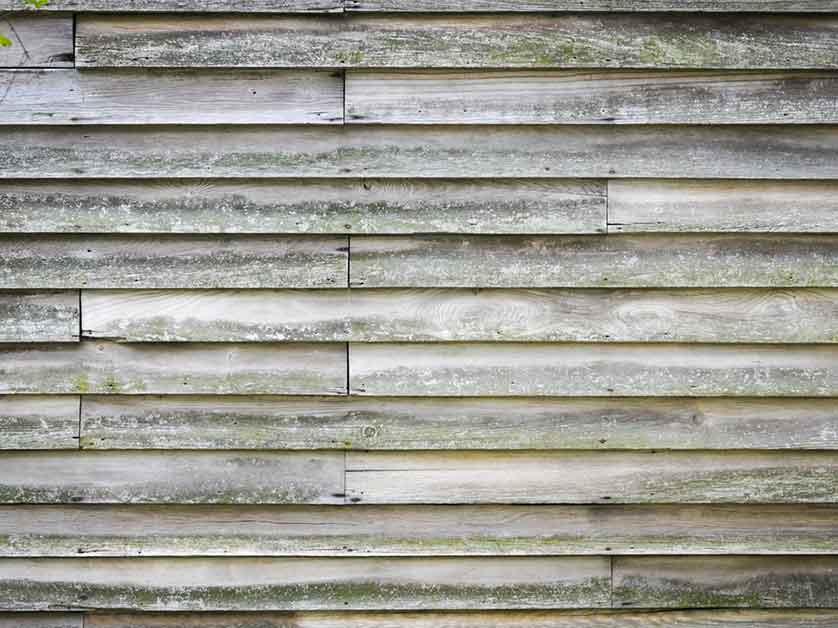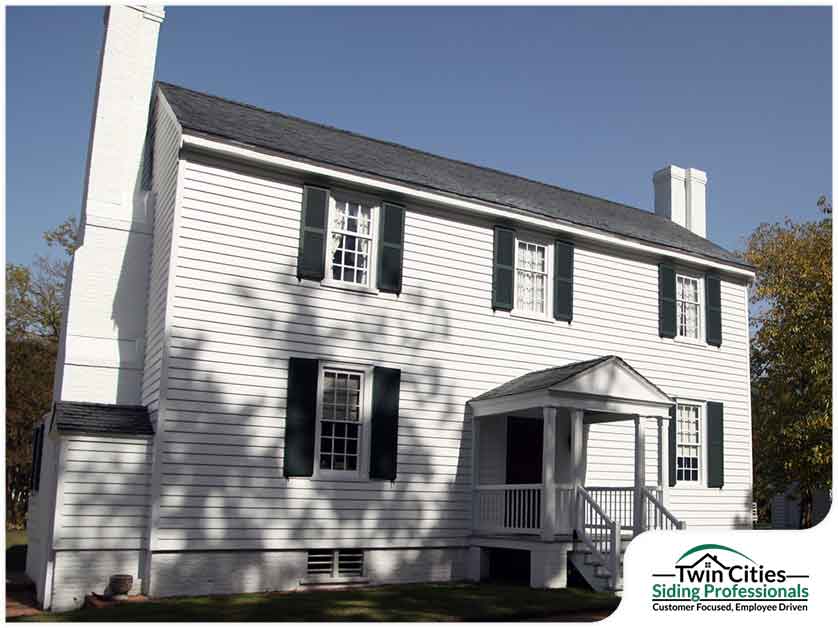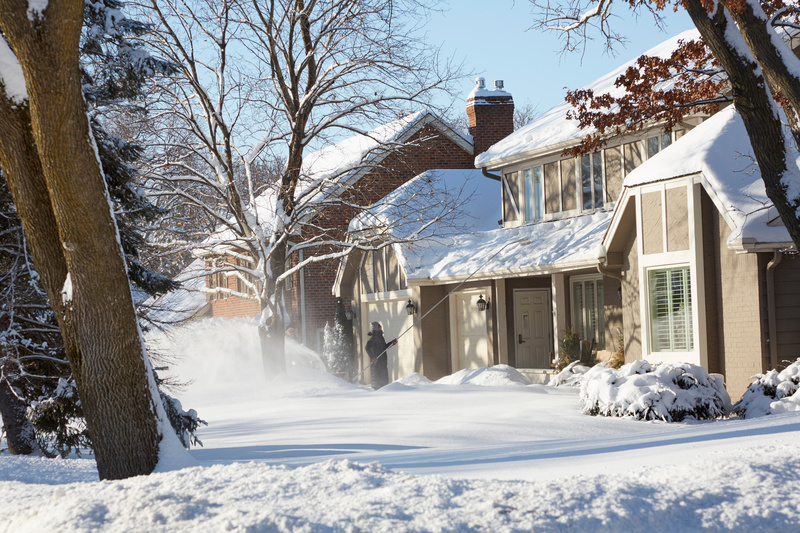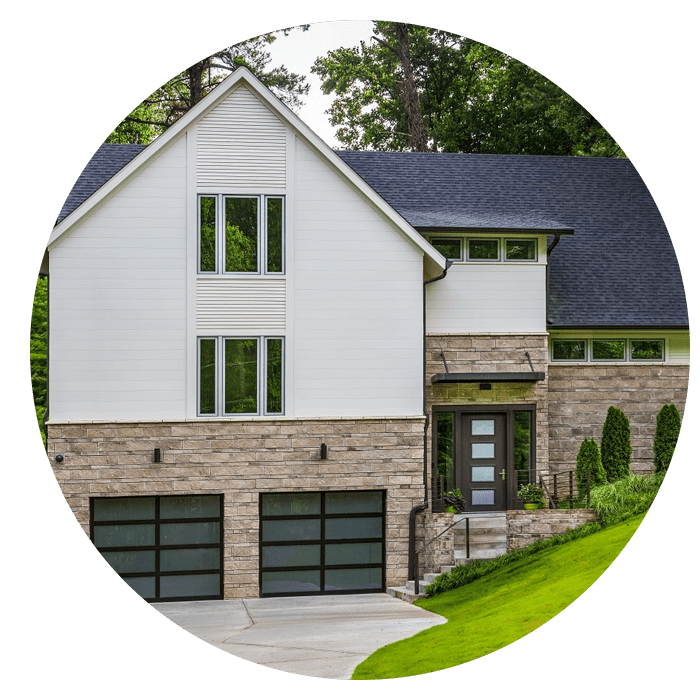Your home’s siding plays a critical role in protecting your structure from Minnesota’s fluctuating weather and ensuring energy efficiency throughout the year. Your home’s siding acts as a barrier against the elements, safeguarding your property from moisture, wind, and temperature extremes. But even premium siding materials, like James Hardie® fiber cement, don’t last forever. Recognizing the signs it’s time to replace your siding can help you avoid more costly repairs and maintain curb appeal. Here are seven common signs it’s time for new siding on your Twin Cities home.
Siding is one of the most important features of your home’s exterior. The condition of your siding directly impacts your house, affecting both its protection from the elements and its overall appearance.
Key Takeaways
- Cracked, warped, or loose siding often signals underlying damage
- High energy bills may indicate poor insulation due to failing siding
- Visible mold or rot points to moisture penetration behind siding panels
- Twin Cities weather accelerates wear—inspections are key
Introduction to Home Siding
Home siding is more than just an aesthetic feature—it’s your home’s first line of defense against Minnesota’s harsh weather, pests, and everyday wear and tear. The right siding protects your home’s structure from moisture, wind, and temperature extremes, while also boosting curb appeal and energy efficiency. There are several popular siding options to choose from, including classic wood siding, low-maintenance vinyl siding, and durable fiber cement siding. Each material offers unique benefits: wood siding brings timeless charm, vinyl siding is known for its affordability and ease of care, and fiber cement siding stands out for its longevity and resistance to the elements. While quality siding can last for decades, no material is immune to aging or damage. Recognizing the signs that it’s time to replace your siding is essential for maintaining your home’s exterior, protecting your investment, and ensuring your property always looks its best.
Assessing Your Current Siding
Regularly assessing your current siding is key to catching problems before they lead to costly repairs. Start by walking around your home and looking for obvious signs of trouble, such as missing siding pieces, cracking siding, or excessive peeling paint. These issues can leave your home vulnerable to water damage, especially after harsh weather or storm damage like heavy hail or strong wind gusts. Pay close attention to areas with soft spots, fungal decay, or evidence of termite infestation, as these can signal deeper structural problems. Long-term moisture penetration, poor ventilation, and rot often show up as mold, mildew, or warped panels. If your siding is nearing the end of its expected lifespan—typically 20-30 years for wood siding and up to 40 years for vinyl siding—it may be time to consider siding replacement. Don’t forget to check with your homeowner’s insurance company to see if replacement is covered after significant storm events. By thoroughly evaluating your siding for these warning signs, you can decide if it’s time to upgrade to new siding, such as fiber cement or vinyl, to restore your home’s curb appeal and energy efficiency.
1. Warping, Buckling, or Cracking
Minnesota winters and summer humidity can wreak havoc on older siding. Small cracks, or even small cracks, are often early indicators of siding problems that should not be ignored. If you notice siding panels that appear warped, buckled, or cracked, moisture may be getting trapped behind them—especially with wood or vinyl. Just like a single missing shingle on your roof can lead to water intrusion and bigger issues, minor siding damage such as small cracks can also result in pest entry and structural deterioration if left unaddressed. This not only compromises the look of your home but also its structural protection. Fiber cement siding, like James Hardie, resists these issues far better than other materials.
2. Faded or Peeling Paint
Siding that loses color prematurely or needs frequent repainting is often past its prime. Most modern siding is designed to hold color for a decade or more. If you’re painting your home every five to six years, it may be time to upgrade to a low-maintenance solution like ColorPlus® Technology by James Hardie—designed for long-term color retention. Additionally, as trends change, homeowners may also choose to replace siding to keep up with current styles.
3. High Heating and Cooling Bills
In the Twin Cities, we see everything from subzero wind chills to sweltering summer highs. If your energy bills are unusually high, worn-out siding could be the culprit. Making the wrong choice in siding material can result in poor insulation and increased energy bills. Gaps, cracks, or poorly insulated siding can lead to significant heat loss or gain. Upgrading to insulated or fiber cement siding can improve energy efficiency dramatically.
4. Moisture Damage, Mold, or Rot
Peeling caulk, dark streaks, or soft spots in siding indicate that moisture is seeping in—often due to compromised seals or aging materials. Fungi feed on wood siding when moisture is present, leading to decay and structural deterioration. Left untreated, this can lead to wood rot or interior wall damage, and considerable damage may occur if moisture issues persist. If you spot mold or mildew, especially at the seams or near the foundation, it’s time for a siding inspection. Prompt attention to these issues helps prevent further deterioration and costly repairs.
5. Insect or Pest Infestation
Woodpeckers, termites, and other pests love damaged wood siding. Termite damage is a common problem with wood siding, as termites can compromise its integrity and durability, leading to structural issues. If you’re dealing with pests burrowing or nesting in your exterior, it may be because your siding is no longer sealed or strong. Pests can leave holes in siding, which exposes your home to further problems like moisture intrusion, rot, and additional pest infestations. Holes in siding are a serious issue that requires immediate attention to prevent further deterioration. Fiber cement is pest-resistant and ideal for Minneapolis and St. Paul neighborhoods where critters are common.
6. Loose or Missing Panels
Storm damage is common across the Twin Cities. If you see siding panels that have come loose, missing pieces, or gone missing altogether, your home’s weather defense is already compromised.
Hail damage is a common cause of siding replacement in the Twin Cities, as hail can leave visible dents or holes in your siding. After severe weather, entire pieces of siding may need to be replaced to restore your home’s integrity and prevent further issues. Aluminum siding is particularly vulnerable to hail damage and dents, making it important to inspect and replace damaged panels promptly.
This is especially important after hailstorms or high winds. Professional siding replacement ensures your home stays protected and visually cohesive.
7. Interior Paint or Wallpaper Issues
Unexpected peeling paint, bubbling wallpaper, or damp spots on your interior walls may actually trace back to exterior siding issues. These interior issues may indicate a structural problem caused by siding failure. Water infiltration through deteriorated siding often leads to hidden damage inside, and prolonged exposure can result in serious structural damage. Replacing siding can prevent costly interior repairs and improve overall home health.
Improving Your Home’s Curb Appeal
Upgrading your siding is one of the most effective ways to boost your home’s curb appeal and increase its market value. Replacing old or damaged siding with quality siding, like fiber cement or vinyl siding, can instantly refresh your home’s exterior and give it a modern, well-maintained look. New siding not only enhances appearance but also offers less maintenance and greater durability, saving you time and effort in the long run. When choosing new siding, consider a siding color that complements your home’s architecture and reflects your personal tastes, while also keeping current trends in mind. A fresh paint job or updated siding can make your property stand out in the neighborhood and attract potential buyers. It’s also important to address any underlying issues, such as pest damage, insect infestations, or fungus growth, before installing new siding to ensure lasting results. By investing in siding replacement, you’ll enjoy a more beautiful, efficient, and resilient home—plus the peace of mind that comes with knowing your exterior is protected and looking its best.
Ready to Upgrade Your Twin Cities Home?
Twin Cities Siding and Roofing provides expert siding replacement with premium products like James Hardie® fiber cement. While some minor siding issues can be addressed with repair, siding that is extensively damaged, worn, or has reached the end of its lifespan should be replaced to maintain your home’s integrity and appearance. Whether you’re dealing with storm damage in Bloomington or rising energy bills in Woodbury, our team delivers Minnesota-tested results.
Learn more about our James Hardie siding installation or request a free estimate to get started today.
FAQs
How long does siding last in Minnesota? Fiber cement siding can last 30 to 50 years, depending on weather exposure and installation quality. Vinyl and wood typically show wear sooner in the Midwest climate. As siding ages, it becomes more susceptible to damage and may require more frequent repairs. Most homeowners only replace siding once, so it’s important to choose wisely to avoid costly future repairs.
Is winter a bad time to replace siding in Minneapolis? Not necessarily. Many Twin Cities contractors work year-round, and winter scheduling may offer better availability and pricing.
What siding is best for Minnesota homes? James Hardie fiber cement siding is a top choice due to its moisture resistance, durability, and performance in freeze-thaw cycles.
Can I replace just a few panels of damaged siding? In some cases, yes. But if damage is widespread or the siding is aged, full replacement may be more cost-effective long-term. Widespread siding problems or signs of premature siding failure are a red flag that a full replacement may be necessary.
Do you offer financing? Yes. Twin Cities Siding and Roofing offers financing options to help make your exterior upgrade more manageable.






